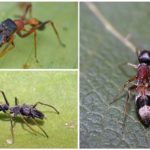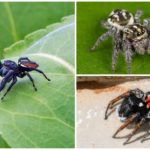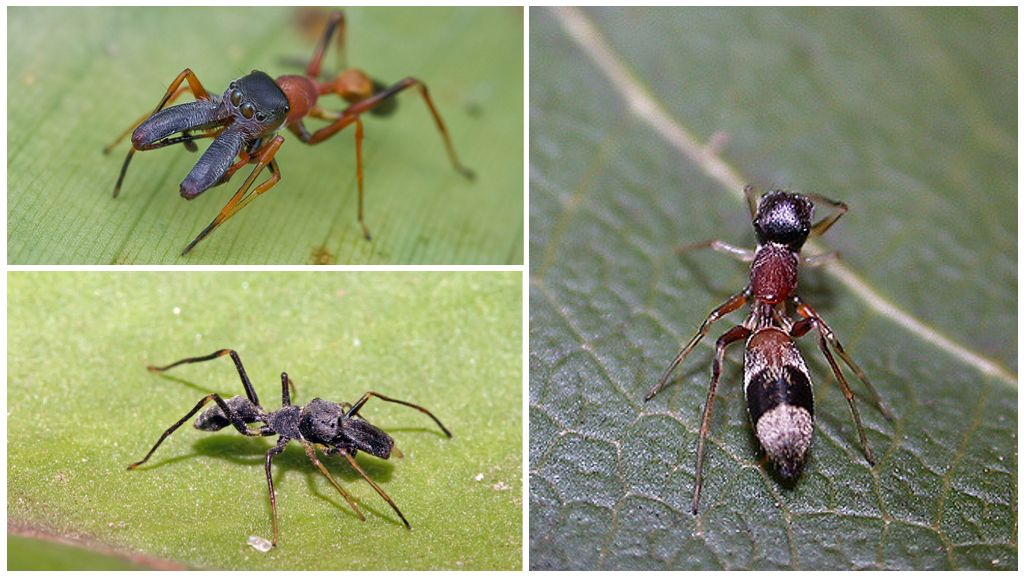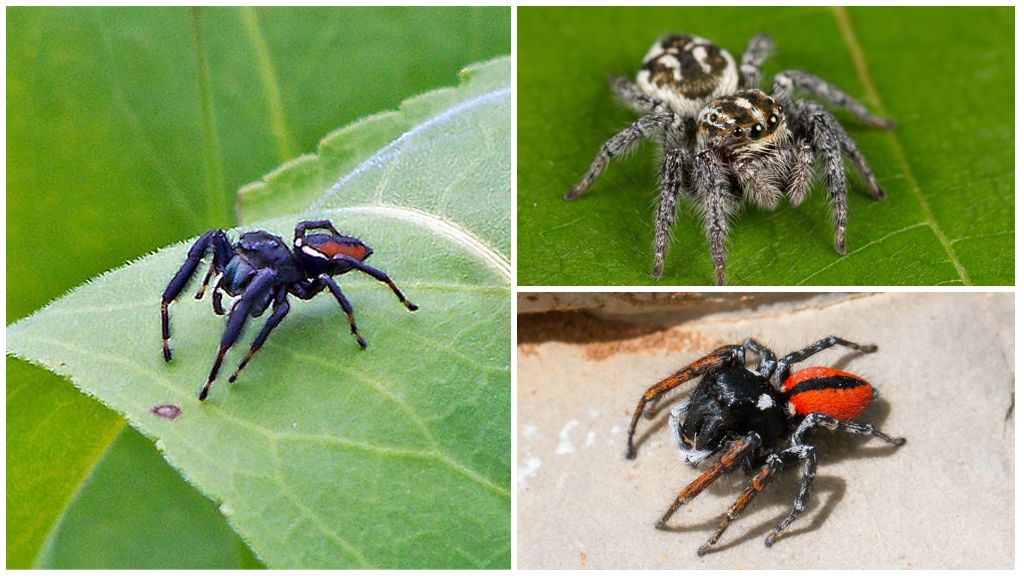Jumping Spiders (Jumping Spiders)
Content
- Horse spider species Myrmarachne plataleoides
- Horse spiders
The main stereotype in relation to spiders - crawling animals, weaving trap nets. Ask someone if the spiders know how to jump, and the other person is surprised to say no. Such an answer would be a mistake. Many species of spiders are able to jump. Someone worse, someone better. But the professionals among arthropod spider-like spiders are horses.
Family description
One of the largest families. Includes 610 genera. Horse spiders are spread across the globe. Representatives of one of the species of this family were found even on Everest, at an altitude of 6700 m. It is not known what the little member of the Salticidae family did in the eternal snows.I hardly tried to jump to the top.
On a note!
In the people there may be not quite correct, but also reflecting the essence of all members of the family, the name “spider jumper”.
The appearance of the representatives of the family is very diverse: from the peacock horse spider to the representatives of the subfamily Myrmarachninae mimicking ants. Sizes also vary from 3 mm to 2.2 cm.
Appearance Myrmarachninae
The name of the subfamily is translated as "ant-like." When looking at a photo of a spider of the species Myrmarachne plataleoides, the thought of a mutant ant comes to mind, if it is a male. The female mimics a weaver ant.
On a note!
This species lives in Thailand.
The male chelicera are strongly advanced, and the spider has a threatening look, although it is harmless to humans.
Myrmarachne inermichelis generally does not differ in appearance from ants. Myrmarachne formicaria looks like an ant from a horror movie. This species is distributed throughout the Eurasian continent and is one of the few species of horse jumping spiders from the subfamily Myrmarachninae living outside the tropical belt.
All spiders Myrmarachninae small and can not seriously confront the enemy. Under the ants, they mimic, so as not to become prey for birds or wasps.The mimicry has gone so far that these horses even had banners on the cephalothorax, imitating the shape of the ant's body. The size of arthropods is 3-7 mm. The rest of the worlds - the usual spiders racers, but you can see their real structure only under a microscope.
Structure
All spider jumpers have 4 pairs of eyes, which are arranged in 3 rows. The first row provides an overview ahead. The average pair is very large. With this pair of spiders can distinguish the colors and shape of the object. Two eyes at the edges provide a wider view.
The second row consists of two very small eyes and is located in the middle of the head. The last pair is located on the back of the head, closer to the chest. This pair provides the mount with a 360 ° view. The special structure of the retina allows you to measure the distance to the victim.
On a note!
Since jumping spiders are active hunters, their eyesight is well developed.
The length of the cephalonex exceeds the width. The cephalothorax itself resembles a wedge in shape: it is flattened from behind and strongly raised in the front half.
For active hunting the horse acquired a bimodal respiratory system: it has trachea and lungs.The brain of this arthropod is one of the largest among all spiders.
Hopping gear
Jumping horse spider using more than one physical force. The device of its paws is equipped with a hydraulic mechanism. Before the jump, the steed may extend his legs due to a change in blood pressure. Thanks to this mechanism, the horse jumps at a distance that far exceeds the size of his body.
Lifestyle
All jumping spiders are active day-hunters. Their prey is small insects. The size of the victim is determined by the size of the hunter. A brave mountaineer from Everest feeds on small flies and springtails, and the largest member of the family, the royal jumping spider, eats other arthropods and beetles that harm sugarcane.
On a note!
Horses living in Russia hunt for agricultural pests.
To offend these useful animals is not worth it. The horse hunts not only terrestrial invertebrates. Some species specialize in the destruction of flying insects, including mosquitoes.
Horse skaters do not weave a web, but actively use its threads.During the hunt, before the jump, the animal attaches the cobweb to the place from which the jump will be made, insuring itself from falling.
Interesting!
Only in the family of horses there is a species that feeds on plant sap. Bagheera Kipling is a highly specialized steed, eating the juice of only one type of acacia. Inhabits arthropods in brazil.
Breeding
In most species of the family, the behavior during the mating games is the same: the male strikes his forepaws at a raised body. If there are several males, the winner is the one with the larger pedipalps.
Web riders need not only for insurance. The female uses her as a building material for her home. For shelter the spider chooses the space under the stones or the roots of the trees. Equipping housing, the female lays eggs and protects them until the young.
Spiders immediately after hatching begin to hunt without needing a mother. For this reason, the female is removed immediately after the birth of offspring. After a few molts the young reach sexual maturity. Live horses on average 1 year.
Danger to humans
Do horseback arrogant character. The horse does not like to run away from danger.Even if you push him, he runs off for some distance and looks around, suddenly behind him.
For a man, no species from the family of horses represents a danger. These arthropods can be safely picked up.
Important!
When catching a horse there is a risk of damaging the animal itself.
Safe racers are not because they are not poisonous. Their chelicera are not able to bite through the thick skin of a person. Many arachnophils keep these spiders in their homes. Even if the animal escapes, it will not scare anyone and will not harm anyone.









